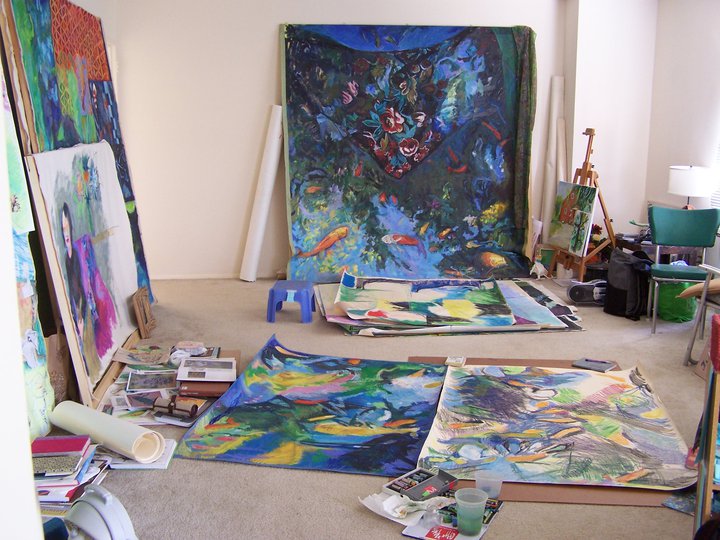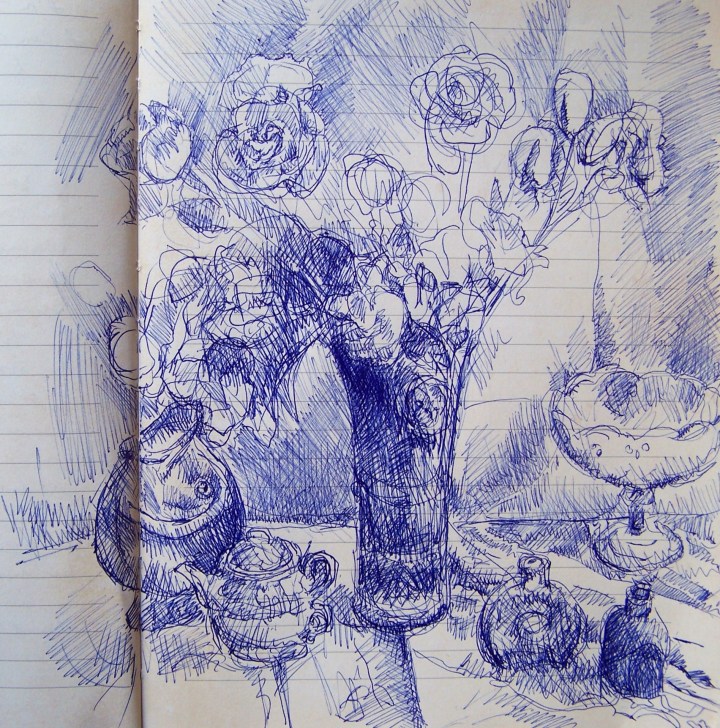I count myself lucky because after years of studying art, I know how to do what I want to do. And regarding the things I don’t know how to do, now I know how to break through the knot of a problem and learn new skills. I know that recognizing my weaknesses is a gradual process and I am content to be ignorant about some of my defects. Indeed, I know that recognizing my strengths is also a gradual process and I am very content to be ignorant about my strengths as well. I have learned how to love the doing of art in the way that I do it, and from that foundation my art is able to grow naturally.
I used to have a big studio. Now I have a small studio. In the big studio, I made large works. Now I return to making small ones. Since I like working large, having to work small could disappoint except that the intricacy of vision is so compelling, and I already have experience in drawing small things and have found out for myself how complicated they can be — how large are the ideas available in compact reality. If nothing else, my notebooks have taught me that.
You can pack a lot of stuff into a small page. And thus the loss of a big studio can lead very naturally to the acquisition of that larger studio which is the world. With a notebook the artist suddenly gains access to vast territory. If my car were my studio, I know now that I can make landscape there or still life, possibly portrait too — I haven’t tried it yet, but I can imagine ….
I wish that I could impress upon people who want to learn how to do art that once you pick up the pencil you are doing it. All the possibility for regret never goes away, all the possibility for joy is continually available. You can only draw one line at a time so all the learning has to lodge in sequential decisions. Some artists have a specific style or idea of what they think art is, and for those artists to reach their goal, they have to assiduously practice the skills necessary to achieve their target: it’s like practicing an instrument.
Other artists don’t know what they want and must be constantly experimenting to find it, and they must also hone their skills and also be willing to plunge ahead in those moments (and they are frequent) when they have no idea what to do. I count myself in this latter group, but self-knowledge being such a difficult acquisition, I don’t know really if I’m the classical artist described in the first example or the jazz artist described in the second. Perhaps the identification doesn’t even matter.
I spent this winter indoors making oil pastel drawings from photographs and it has honed my skills and emboldened my confidence so that I’m ready to go outdoors again and work from nature. Once I step into that landscape the size of my studio will have enlarged to scary proportions! Am I ready? I’m not sure. But the point is that in art, you must begin where you are. And it happens that “where you are” changes with time. If you can inhabit that space where you find yourself in the present, you can do and learn wonderful things.
It’s always in the doing of the picture “right now” where learning happens. So if there was something that was stopping you from this doing, once you jump over that obstacle, you’re back in the game.





je pense que nous sommes tous obligés d’être expert dans l’art du possible, faire avec ce qu’on a.
Tes tableaux, grands ou petits sont toujours magnifiques Aletha.”
«Vous devez» est parfois une bénédiction déguisée …. j’aime mon “nouveau” atelier!
Lovely, fine, brave observations…. thank you!
I’m glad you liked the post, Ann.